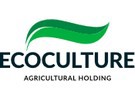A new episode of “PVR” programme series devoted to greenhouse vegetables has been aired on the MIR24 channel. The story is focused on the greenhouse complex in Pikalyovo (Leningrad Oblast), a part of ECO-Culture holding.
The writers of the program talked to the Head of the plant Maria Butkina and the employees of the enterprise and found out how cucumbers, lettuce, and tomatoes are cultivated in modern greenhouse complexes.
Particular attention at the complex is being paid to lettuce crops. There is a high demand for the Frillice variety both in Leningrad Oblast and in the central regions of Russia, so the company is producing lettuce all year round. The peak periods fell on winter. The lettuce is cultivated using Finnish technology – it is more suitable for the light zone which Leningrad Oblast is located in.
During winter, one lettuce sprout ripens within 42 days. In contrast to plants grown in pots, when grown in a row the sprouts are not always suppressed by cramped conditions. That’s why they turn out to be so bushy. In the spacious lettuce section of the greenhouse, up to 800,000 plants can be grown simultaneously. Planting new lettuce sprouts and cutting the mature ones is a continuous process – this is the only way to ensure the right amount of output. The ripe salad is automatically transferred to the packing department and thereby reaches the consumer as fresh as possible.
Frillice lettuce is incredibly popular, being sold out completely in the shortest possible time. The high demand is determined not only by the gustatory qualities of the crop but also by its eco-friendliness – the agricultural technology used in ECO-culture greenhouses implies only natural methods of plant protection and growth stimulation.
Another culture adored by customers is tomato. Liliya Tekhova, the agronomist of the complex, explained that the Dutch cultivation technology, taken as a basis, doesn’t quite fit into the light zone of the region. Therefore, the technique was significantly improved taking into account local lighting conditions.
The main tomato varieties grown in the greenhouses are exclusive cocktail hybrids. They have higher sweetness indicators and are also produced with the use of natural methods only. For example, pollination of the plants is carried out by bumblebees. With their activity decreasing during winter, greenhouse personnel has to do all sorts of tricks to get insects to work. Meanwhile, pest control requires the involvement of other helpers from the Insecta family – entomophages, predatory bugs bred at the same facility in specially created conditions.
The story further continues about the cultivation of cucumbers. For these plants, protection activities against diseases and pests start at the stage of seed-sprouting (from Dutch seed material) according to Finnish technology. After replanting, the crops are first harvested in three weeks. Cucumbers occupy the majority of greenhouse space, owing to the popularity of this vegetable among the population.
The total productivity of the plant amounts to 6,000 tons of vegetables per year.

 Eco-Culture
Eco-Culture